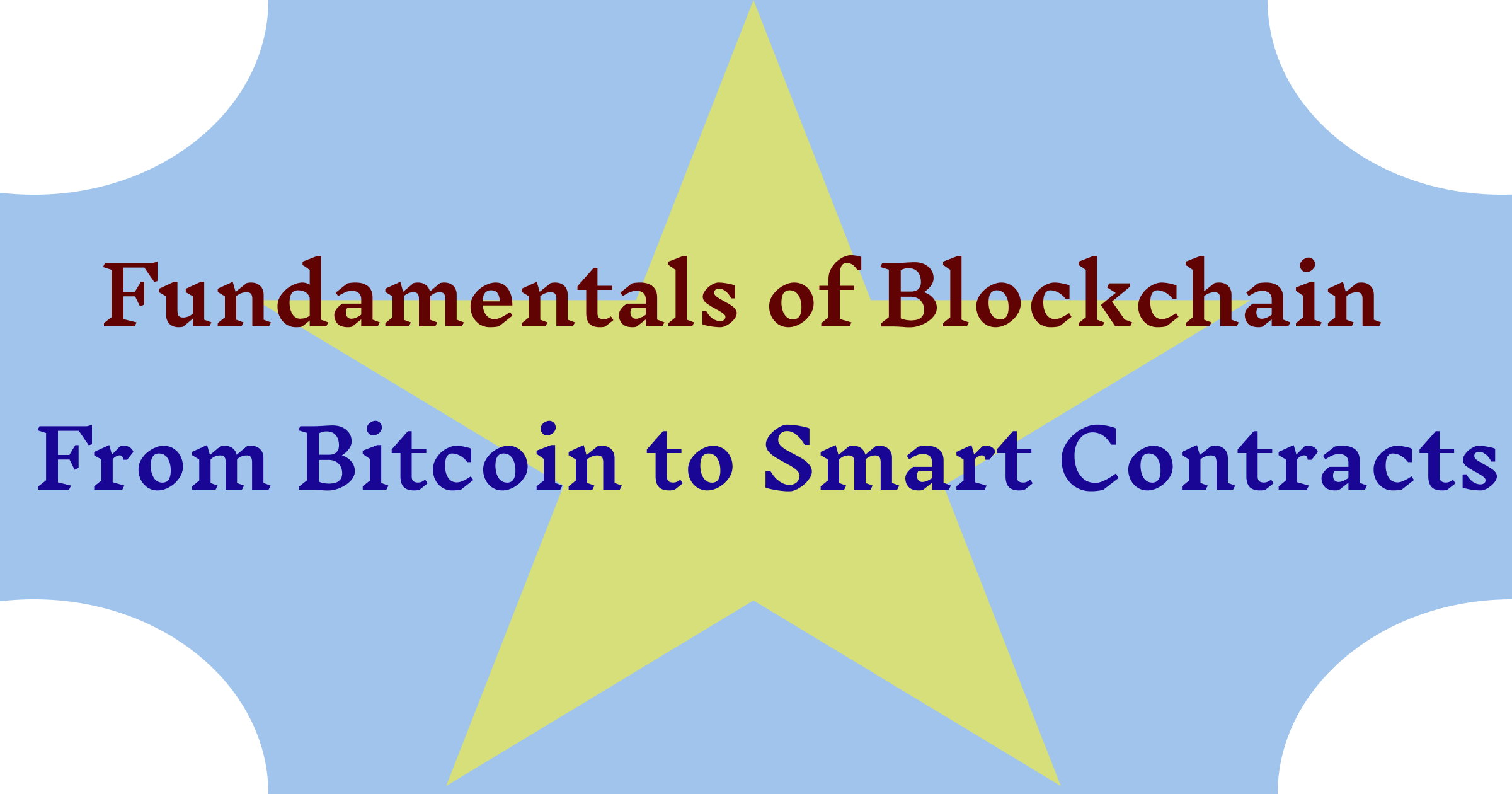Exploring the Fundamentals of Blockchain: From Bitcoin to Smart Contracts
 Gautam Jha
Gautam Jha
Bitcoin and Blockchain
Bitcoin, the first implementation of blockchain technology, was introduced by the pseudonymous Satoshi Nakamoto. Described in the Bitcoin Whitepaper, Bitcoin enables peer-to-peer transactions within a decentralized network, utilizing cryptographic principles to ensure security and transparency. Often referred to as "digital gold," Bitcoin is considered a superior digital store of value due to its fixed supply, akin to the scarcity of gold. This groundbreaking protocol laid the foundation for the development of blockchain technology and censorship-resistant finance.
Ethereum and Smart Contracts
Building on the foundation laid by Bitcoin, Vitalik Buterin and others introduced Ethereum, which expanded the capabilities of blockchain. Ethereum's primary innovation is the implementation of smart contracts. Initially conceptualized by Nick Szabo in 1994, smart contracts are self-executing contracts with the terms directly written into code, eliminating the need for intermediaries. This innovation enables decentralized transactions, organizations, and agreements.
While Bitcoin does have limited smart contract functionality, it is intentionally "Turing incomplete." In contrast, Ethereum's smart contracts are fully programmable, enabling more complex and versatile applications.
Smart contracts are a set of instructions executed in a decentralized manner without the need for a centralized or third-party intermediary.
The Oracle Problem
Despite their potential, smart contracts face a significant limitation: they cannot interact with or access data from the real world, a challenge known as the Oracle Problem. Blockchains are deterministic systems, operating within their own ecosystem. To make smart contracts more useful, they need external data and computation.
Oracles provide this crucial connection by delivering data to blockchains or running external computations. To maintain decentralization, it's essential to use a decentralized Oracle network rather than relying on a single source. This integration of on-chain logic with off-chain data leads to the creation of hybrid smart contracts.
Chainlink: Bridging Blockchain and Real-World Data
Chainlink is a leading decentralized Oracle network that enables smart contracts to access external data and computation. Chainlink is blockchain-agnostic, meaning it works with any blockchain, thus broadening the applicability and functionality of smart contracts.
Layer 2 Scaling Solutions
As blockchain networks grow, they encounter scalability issues. Layer 2 (L2) solutions have emerged to address this challenge. L2 solutions involve additional blockchains that interact with the main blockchain, allowing for increased scalability and efficiency. There are two primary types of L2 solutions:
Optimistic Rollups: Examples include Optimism and Arbitrum.
Zero-Knowledge Rollups (ZK Rollups): Examples include ZK Sync and Polygon ZK EVM.
While understanding the intricacies of these solutions can be complex, their primary goal is to improve the scalability and efficiency of blockchain networks.
Common Blockchain Terminology
To navigate the world of blockchain, it's important to familiarize yourself with some common terms:
Blockchain: A digital ledger that records transactions across multiple computers in a secure and decentralized manner.
Oracle: An intermediary that provides smart contracts with external data, bridging the gap between blockchains and the real world.
Layer 2: Technologies built on top of a blockchain to improve its scalability and efficiency.
Dapp (Decentralized Application): An application that runs on a decentralized network, typically powered by smart contracts.
Smart Contract: A self-executing contract with the terms written into code, running on a blockchain.
Hybrid Smart Contract: A smart contract that combines on-chain code with off-chain data and computations provided by oracles.
Ethereum/EVM (Ethereum Virtual Machine): A blockchain platform known for its smart contract functionality, with the EVM serving as its computation engine.
Credit
This post is based on insights from Cyfrin Updraft. For a more detailed explanation, check out their video on What is a Blockchain?.
By understanding these fundamental concepts, you'll be better equipped to explore the vast and evolving landscape of blockchain technology. Stay tuned for more insights and deep dives into specific aspects of this revolutionary field.
Subscribe to my newsletter
Read articles from Gautam Jha directly inside your inbox. Subscribe to the newsletter, and don't miss out.
Written by

Gautam Jha
Gautam Jha
Thoughts. Experiences. Inspiration. I’m so glad you’ve arrived. gautamjha.hashnode.dev is where I share with you what interests me most, sparking your excitement so that you can nurture your own passions and projects. I hope you enjoy my blogs and all of the content I create. We all need something to motivate us. Take a look around; perhaps you’ll discover what exhilarates you. Are you ready to be inspired? I am BCA Student, I am learning DevOps and also applying it on my personal projects. I want to collaborate with other folks and make some amazing team to learn from them, with them.